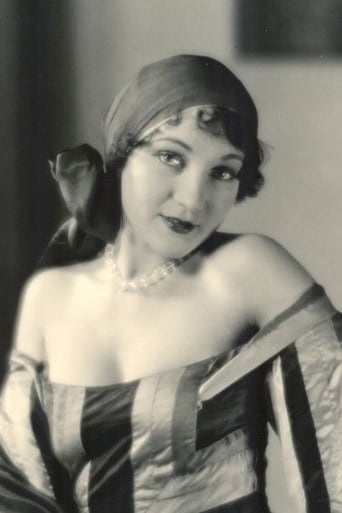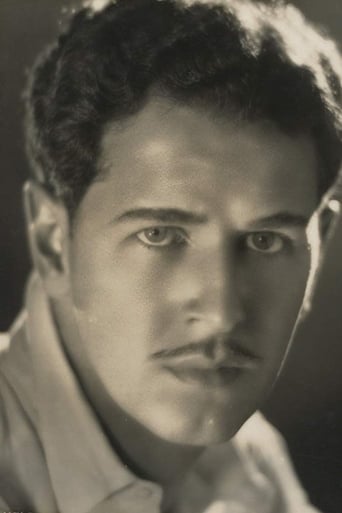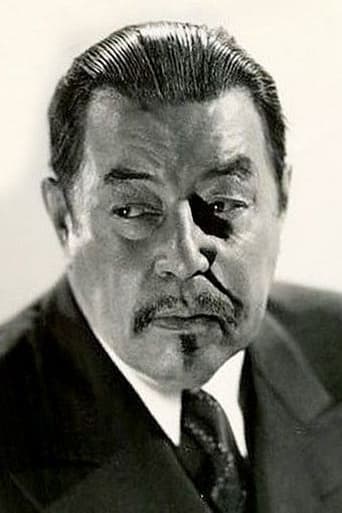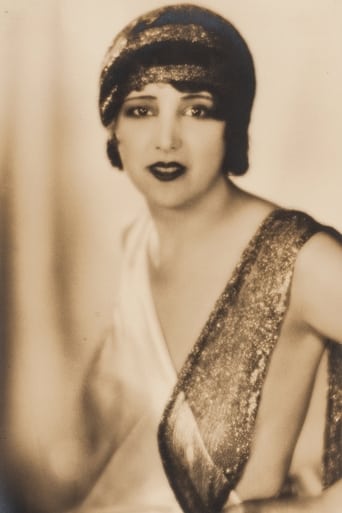Actuakers
One of my all time favorites.
Beystiman
It's fun, it's light, [but] it has a hard time when its tries to get heavy.
Janae Milner
Easily the biggest piece of Right wing non sense propaganda I ever saw.
Allison Davies
The film never slows down or bores, plunging from one harrowing sequence to the next.
Tad Pole
. . . to understand how DON JUAN's escape from a Borgia dungeon could have happened. Since I lack such a diploma, I cannot fathom how this scene is any more plausible than that James Bond flick in which half of Venice collapses into the canals toward the end due to an elevator malfunction. I also noticed that the original print I just watched lacks many of the "synchronized sound effects" with which Warners Bros. sound technicians later enhanced select snippets of DON JUAN for their "25 Years of Sound" celebratory documentary shorts. Apparently, these studio flunkies were so lacking in imagination that they could not conceive of a later generation that would be able to compare the original DON JUAN studio release to their fraudulent "spiffed up" version. As Pope Alex wrote, "What a tangled web we weave when first we endeavor to deceive." Of the three characters actor John Barrymore tackles in DON JUAN, I like his brief cameo as a stand-in for Borgia Family torturer Neri the best. He is convincing then; less so as a lover, and still less as a duelist.
rfells@icfa.org
I appreciate the comments made so far on this film but most seem to judge this film in a vacuum and without any background on the silent film genre, a medium quite different from sound films. One commenter even criticized the film for being in black & white. Come now, that's rather silly.DON JUAN belongs to the great tradition of silent film swashbucklers during the 1920s of which Douglas Fairbanks was the King (and who self-financed his films). Beginning in 1920, Fairbanks effectively switched gears from his modern dress satires of American foibles he made during 1916 to 1919, to literally recreating his boyhood daydreams of being an action hero of Days of Old. The public responded enthusiastically and Doug made a fortune. But his films reaffirmed a kind of rigid moral system and both his character and the heroine were invariably chaste. Clearly, other film makers who were a bit more daring sensed an opportunity to go further than Fairbanks had been willing to go and Warner Bros. struck while the iron was hot in 1926 with DON JUAN.Compared to the Fairbanks films such as Three Musketeers (1921), Robin Hood (1922), Thief of Bagdad (1924), and Don Q, Son of Zorro (1925), which are to this day excellent films, DON JUAN seemed like a revelation with its sexually overt protagonist and equally overt female characters (when Lucretia Borgia first sees Don Juan, a close up shows her clearly eyeing his crotch!). In addition, John Barrymore (aided occasionally by a stunt double) provided a sufficient number of athletic stunts that would satisfy most Fairbanks fans. DON JUAN was and remains a most exhilarating film with a unique conclusion that combines a chain reaction of swashbuckling events.I must take exception to the most recent commenter's claim that actor Willard Louis, who played Juan's servant Pedrillo, died mid-point in filming. Poor Mr. Louis indeed perished from typhoid fever but either after filming had been completed or at least after his work was completed. He appears throughout the film and his presence during the film's final moments would have been unnecessary. However, if the previous reviewer wanted to question Joseph Swickard's disappearance from the film (he played Mary Astor's father), I would agree that his sudden departure from the story was strange. However, Mr. Swickard lived and appeared in films for many more years so perhaps in DON JUAN he was merely the victim of the film editor who needed to tighten up the story. At any rate, it is a great film and the original Vitaphone music score interprets the action so well that all the young composers who are hired by Turner Classic Movies to provide new scores to silent films ought to be required to see - and hear - DON JUAN to fully comprehend the relationship between silent film and its musical accompaniment.
zpzjones
There's been a lot written about Don Juan in film books about the beginning of pre-recorded sound. First off to respond to an earlier poster who wanted to know how the soundtrack was recorded. It was recorded by the New York Philharmonic w/100 piece orchestra in a non-soundproof theater in New York. This theater unfortunately was situated near an overland subway track and vibration from passing subway trains just could not be tolerated. So the recording was done in the middle of the night when no trains were running. It was that simple.It's amazing that this film not only survives intact but with it's actual pre-recorded scored track, the way 1926 audiences saw & heard it. No new score or modern re-recording of the original. This track is sort of an original sound film heirloom and we're lucky to have it today for posterity's sake. This is the way silent films should be seen music wise anyway. This was the original intention of pre-recorded sound to present to audiences, full orchestral music where they weren't able to listen to it. If you can forgive the primitive process of Vitaphone and appreciate the marvelous sync score for what it is, you can enjoy this sumptuous picture immensely. The 100 piece orchestra really makes it's presence felt. I'm sure the actual score could be re-recorded with modern technology and would be beautiful.John Barrymore follows in the swashbuckling tradition of his then film contemporaries, Douglas Fairbanks & Rudolph Valentino. It's a great legendary figure for the Great Profile to play, and he and the cast seem to have the time of their lives acting through their scenes. Without giving spoiler away, I think the man sealed in the wall is one of the best scenes in the pic.A curious thing about Don Juan's production. Warner Brothers then a fledgling newbie studio had just signed Barrymore to a three picture deal and wanted to get Don Juan into production as soon as possible after their winning success with Barrymore in Beau Brummel(1924). However Barrymore, who had some serious clout at the time, wanted to film what would become a bastardized though picturesque version of Moby Dick called The Sea Beast(1926). Thus Don Juan's production schedule got pushed back in order for the Sea Beast to come first. Fortunately for sound film history & Don Juan, this gave the four Warner Brothers time enough to experiment and increase their interest in Vitaphone. The idea then came up to release one of the new feature pictures with an orchestral score in the new Vitaphone process. Don Juan happened to be completed and ready for release in mid-1926 and it was chosen for Vitaphone. One tends to wonder if Sea Beast had been made after Don Juan, that it would have been the one chosen for Vitaphone and we might be listening to a totally different score. It really came down to what film was being released at the time the decision was made to go with Vitaphone.Alan Crosland proved a very intuitive & inventive director and formed a great professional working relationship with the irrascible Barrymore. Under Crosland's direction Don Juan moves swiftly and is cut, photographed & edited to form a wonderful finished product. Director & Star made three or four long films together and Don Juan is Crosland's prelude to his better remembered though inferior Jazz Singer(1927). Don Juan is quite possibly Crosland's silent masterpiece IMHO.The only inconsistency in the film is that Pedrillo, Don Juan's trusted assistant, disappears halfway through the film with no explanation. This because actor Willard Louis, who played Pedrillo, dropped dead before the production was finished. But enough of his scenes were completed to include him in the first half of the movie with continuity and without a stand in.It was great of Turner to release this movie on video in the early 90s but with the recent release of Greed(1923) on DVD, it would be nice if a DVD of Don Juan could be fixed up with some bonus material explaining the making of as well as the historical significance of the movie. Such a film as this deserves that
DUKEEVERTS
In my most humble of opinions, this is one of the greatest silent movies ever made. The story line, the sets, (the set designer deserves special credit) the photography, the rapid pace and hesitation when called for, everything combined made for and hour and a half of pure enjoyment. And it was so enjoyable to see one our great talents at his best. There will never be another John Barrymore. And in this film there was something not too often seen in silent film. There was just not movement, there was ACTING. GREAT ACTING. And wait for the chase scene. Absolutely terrific effects. I recommend this film to anyone who is a real fan of films, silent or sound. And as an added thought, there was that beautiful musical score played so dramatically by the New York Philharmonic.





